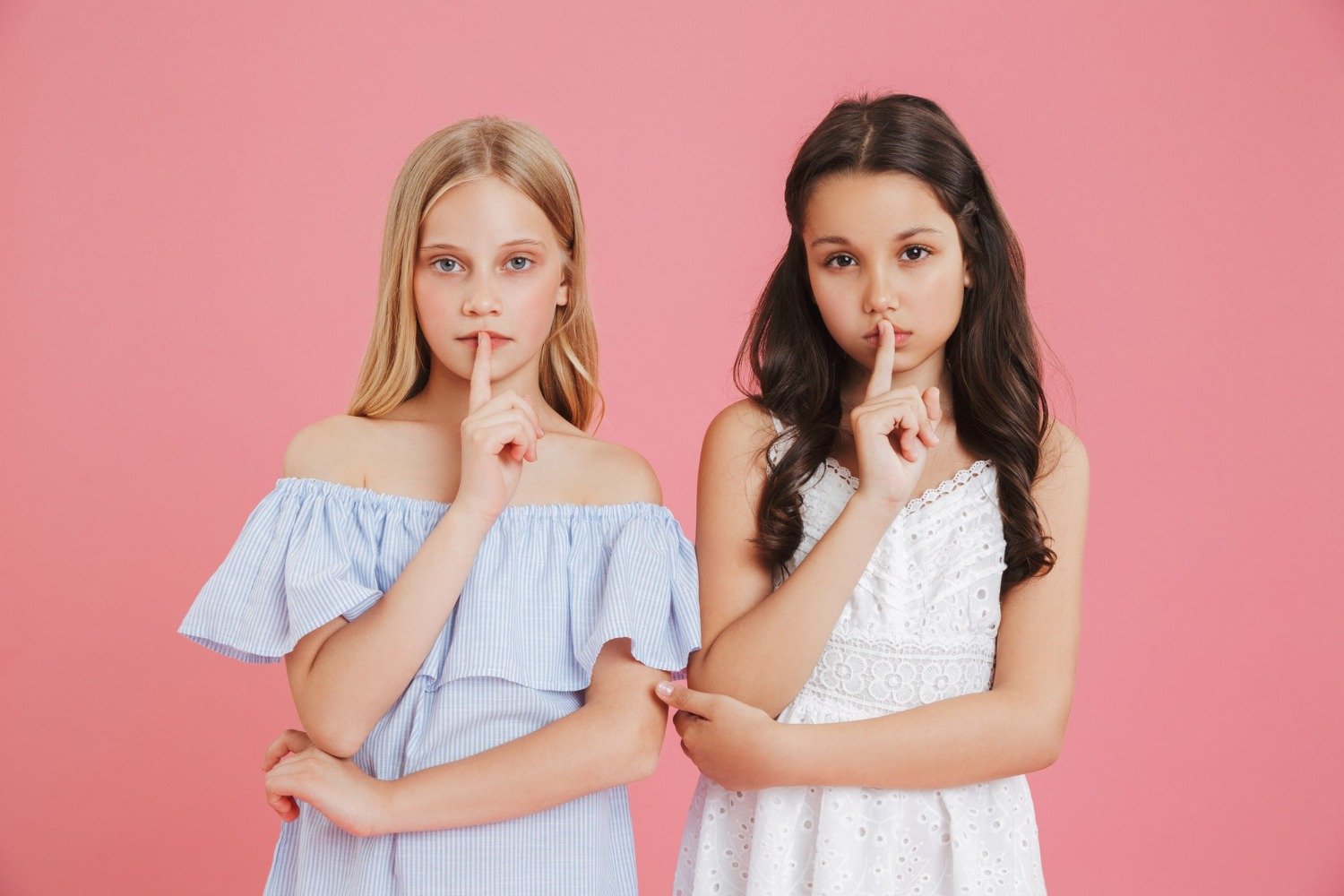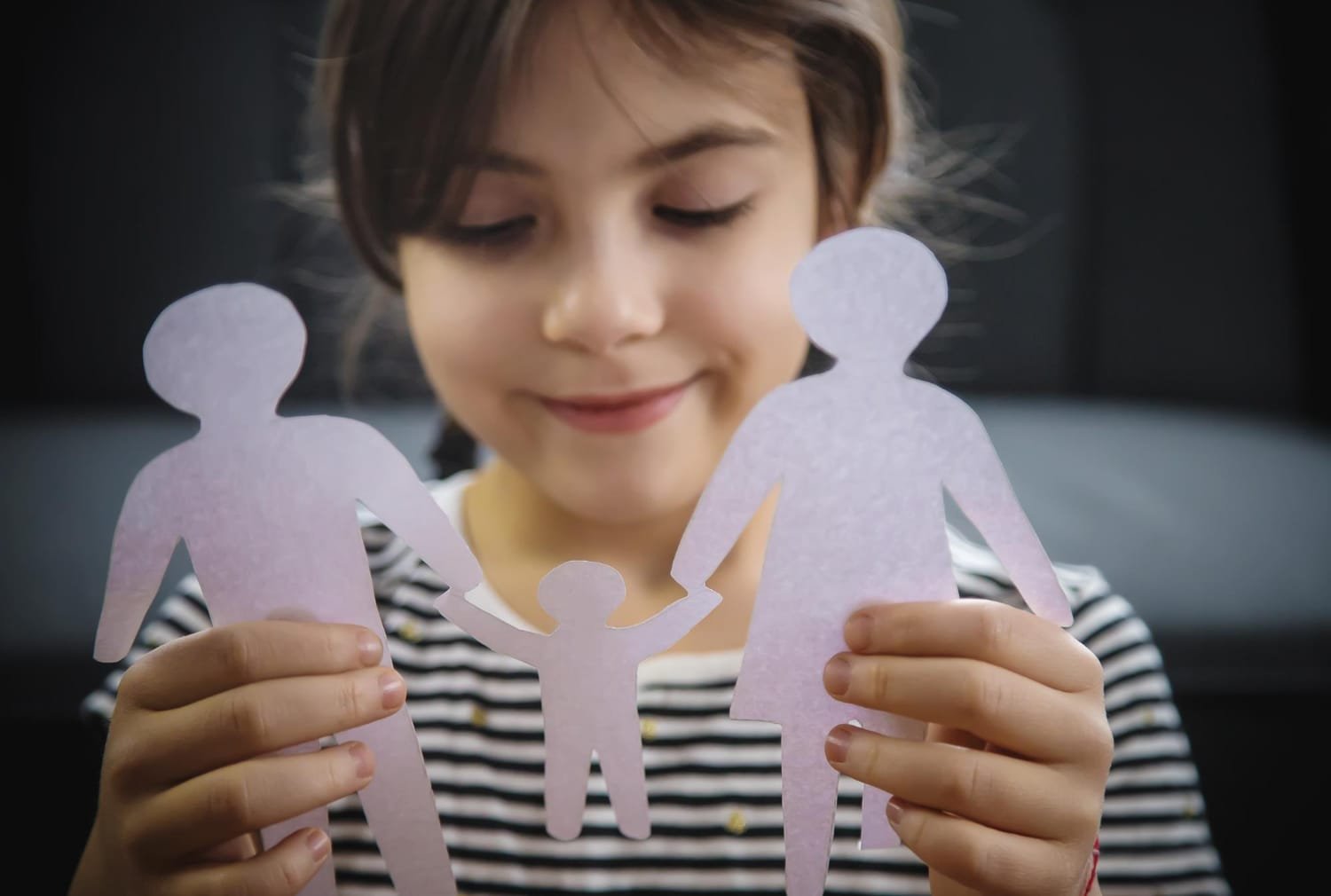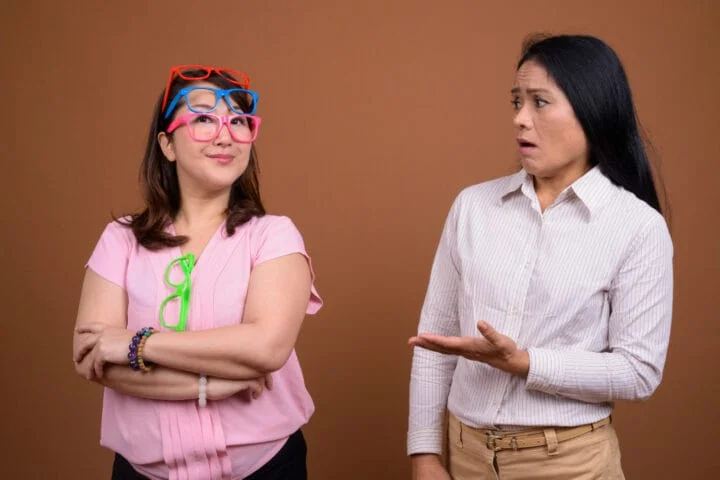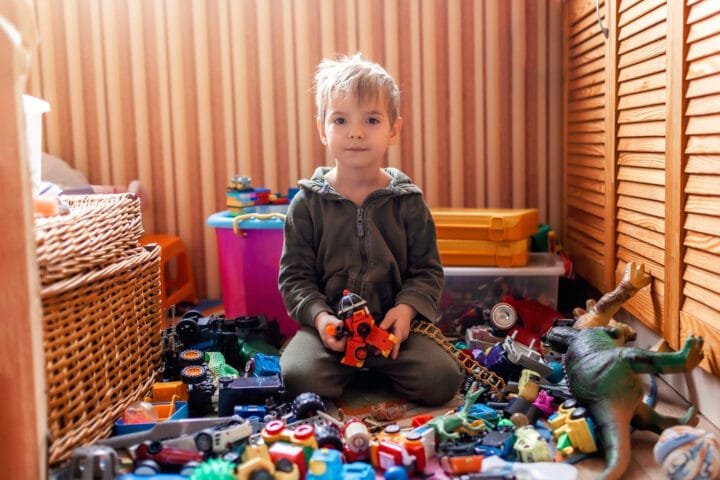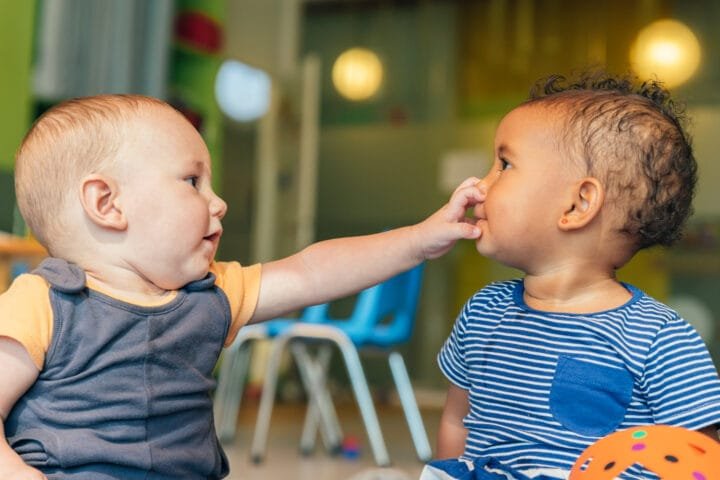OMG, They Did WHAT?! A Mom’s Survival Guide to the “Self-Exploration” Talk. Little Bodies, Big Questions: How to Properly Talk to Young Children About Masturbation?
Ever walked in on your little angel doing something that made your jaw drop and your brain short-circuit? Yeah, that. You know, the “self-exploration” tango. Suddenly, you’re not just a parent; you’re the unwilling star of the most awkward conversation of your life. You freeze. You want the floor to open and swallow you whole. Or maybe you want to run screaming from the room.
I’ve been there, believe me! My daughter was maybe four, and I found her in her room, wholly engrossed in herself. My first reaction was pure panic. Like deer-in-the-headlights panic. Then came the internal debate: Do I pretend I didn’t see it? Do I scold her? Run away and join the circus? But what if I told you there’s a way to talk about it without resorting to vague metaphors, turning fifty shades of red, or spontaneously combusting?
We’ll arm ourselves with knowledge and reasonable old-fashioned confidence to handle these moments as pros. We will rely on humor, honesty, and helpful information. We will use wisdom from personal experiences, things I’ve learned the hard way, and expert advice to ensure our approach is informed and relatable. Because, let’s face it, we’re all just winging it here.
Setting the Stage: Why Open Dialogue About Self-Exploration is Crucial
Look, nobody hands you a manual on how to properly talk to young children about masturbation when you leave the hospital with that tiny human. It’s a taboo topic. It’s the elephant in the room that nobody wants to acknowledge. It’s just not something we generally discuss. But here’s the thing: Silence isn’t golden. It’s just awkward and, honestly, potentially harmful.
Once, I tried using sock puppets to explain “the birds and the bees” to my eight-year-old. Let’s say it didn’t go well. It ended with both of us staring at each other in confused Silence.
The Uncomfortable Truth: Recognizing the Taboo and its Seriously Harmful Effects
We live in a society that’s somehow more comfortable discussing the intricacies of quantum physics than kids’ perfectly natural curiosity about their bodies. Seriously, we can talk about black holes, but not this. It’s a subject shrouded in shame and secrecy. It’s been demonized, pathologized, and just plain ignored throughout history.
Why is that? Maybe it’s the dusty remnants of Victorian prudishness. Perhaps it’s the fear of our sexuality projected onto our kids. It is like we are afraid that talking about it will make it more real. I remember my mother found my diary when I was 12. To this day, it’s a memory that I wish never happened. She discovered that I had a crush on the neighbor’s boy. Oh, the drama! She made such a big deal about it, lecturing me about “ladylike behavior” and how I was “too young for boys.” That whole experience created so much shame in my life, and not just about boys, but about my own body and its desires.
Whatever the reason, this taboo has real consequences. When we don’t talk about self-exploration, we create a vacuum that gets filled with misinformation. Kids turn to the internet, friends, or even their imaginations, often leading to inaccurate and potentially harmful conclusions. Studies show that a staggering 70% of teens get their information about sex and bodies from unreliable sources. That’s a recipe for disaster if I ever heard one.
A 2014 study in the Journal of Sex Research found that people who received more comprehensive sex education, including info about masturbation, reported greater sexual satisfaction and fewer sexual problems later in life. That makes sense. It’s like giving someone a map instead of throwing them into the wilderness.
That whole mess leads to feelings of guilt, shame, and confusion. A study published by researchers at Indiana University in 2015 found that people who received accurate information about masturbation reported greater sexual satisfaction and fewer problems related to sexual function. Dr. Ruth Westheimer, a renowned sex therapist, emphasizes, “Silence about sexual matters is harmful. It leads to ignorance, fear, and shame.”
By openly discussing this topic, we empower our children to develop a healthy relationship with their bodies, fostering self-esteem and confidence. We are giving them a gift.
Building Bridges, Not Walls: Fostering Trust and Communication. For Real.
Picture this: your child comes to you, eyes wide with curiosity, and asks, “Mommy, why does it feel good when I touch myself down there?” What do you do? Do you clam up? Change the subject? Offer them a cookie and pray they forget about it. Or do you seize the moment to build a bridge of trust and understanding?
We need to remember how important it is to keep the lines of communication open. I know it’s not easy. I know it is awkward and uncomfortable. And for sure, it is not what I learned growing up. But we have to try.
A survey by the Kaiser Family Foundation in 2010 found that 92% of parents believe it’s important to talk to their children about sex. But get this – only about one-third have had comprehensive discussions. That’s a huge gap.
The Journal of Adolescent Health reported that teens who can openly communicate with their parents about sex are significantly more likely to delay sexual activity and use contraception when they do become active. Let’s flip the script. Our kids are naturally curious. They want to learn about the world, including their bodies.
It is essential to acknowledge this curiosity, not shut it down. We should create a safe space where they feel comfortable asking anything without fear of judgment or ridicule. It’s about showing them that their questions are valid, their bodies are standard, and their feelings are okay. It is about being there for them, no matter what. Dr. Logan Levkoff, a sexuality and relationship expert, emphasizes the importance of creating a “shame-free zone” where children feel comfortable discussing their bodies and sexuality.
Remember, it’s okay to show them you’re also learning. I remember when my youngest asked me where babies come from. I stumbled through some explanation about seeds and eggs, and he just looked at me, utterly confused. He was not buying it. Later, I found a great book on the topic, and we read it together. It was a learning experience for both of us!
MythBusters: Separating Fact from Fiction About Masturbation. Let’s Get Real.
Myths are like those annoying chain emails from your aunt – they spread like wildfire and are just as inaccurate. And when it comes to masturbation, the myths are plentiful, and frankly, some are just ridiculous. Some historical myths even suggested that masturbation could lead to insanity or physical deformities. Can you believe that? Though now widely discredited, these beliefs contributed to the subject’s stigma.
This misinformation has persisted for centuries, causing undue anxiety and shame. So, let’s bust some of these myths open, shall we?
“It’ll Make You Go Blind!” – Debunking Physical Health Myths. Once and For All.
Seriously? This one’s been around since the 18th century, and it’s as absurd now as it was then. There’s this idea that touching yourself will damage your eyes, make hair grow on your palms, or even shrink your brain. I remember hearing this one in the schoolyard and being terrified for weeks! I kept checking my palms for hair.
Newsflash: masturbation has zero impact on your vision, your hair growth, or your brainpower. None. Zip. Zilch. The opposite is true! Studies show that self-exploration is beneficial for your health. It can reduce stress, improve sleep, and boost your immune system.
A 2009 study in the journal Psychoneuroendocrinology found that sexual arousal and orgasm can release endorphins, which have pain-relieving and mood-boosting effects. The American Medical Association (AMA) has long recognized masturbation as a normal and healthy part of sexual development, stating that it has no harmful physical effects. None at all.
Dr. Ian Kerner, a sexuality counselor and New York Times best-selling author, states, “Masturbation is a healthy and safe way to explore one’s sexuality, relieve stress, and improve sleep.” It’s time to throw these outdated myths in the trash where they belong. Our kids deserve better than these old wives’ tales.
“It’s a Sinful Act!” – Addressing Religious and Moral Misconceptions. It Is a Tough One.
Religion and morality often get tangled up in discussions about self-exploration, leading to a lot of guilt and confusion. Different faiths have different perspectives on the matter, and it’s important to respect individual beliefs. Some religious texts have been interpreted as condemning masturbation, while others are entirely silent on the issue.
However, separating personal values from objective health information is just as important. We can acknowledge that some religions view masturbation as morally wrong while also emphasizing that it’s a natural and healthy part of human development. It is possible to hold both views.
According to a study by the Pew Research Center in 2019, views on masturbation vary significantly across religious groups, with some denominations holding more conservative views than others. It’s about finding a balance that honors your faith while promoting your child’s well-being.
Focus on self-respect, respect for others, and making healthy choices, regardless of your religious stance. I remember struggling with this, growing up in a somewhat religious household. It took me a long time to reconcile my beliefs with what I had been taught. I had to do a lot of soul-searching.
It is crucial to remember that our primary responsibility as parents is to ensure our children’s physical and emotional health. Theologian James B. Nelson, in his book “Embodiment,” argues that a healthy understanding of sexuality, including masturbation, can be integrated into a faith-based worldview. It doesn’t have to be one or the other.
“Only People Without Partners Do It” – Deconstructing Social Stigmas. Seriously.
Society has a weird way of attaching shame to anything related to pleasure, especially when it comes to our bodies. There’s this misconception that masturbation is something only lonely, undesirable people do as a substitute for “real” intimacy. Wrong! So wrong.
Self-exploration is a normal part of self-discovery for people of all ages, genders, and relationship statuses. A 2017 study in the Archives of Sexual Behavior found that many individuals in committed relationships engage in masturbation, and it often has a positive impact on their sexual satisfaction.
It is a way to explore your body, learn what feels good, and enjoy being you. Whether single, married, or somewhere in between, there’s nothing wrong with a bit of self-love. Research from the Kinsey Institute indicates that masturbation is common among individuals in committed relationships, often serving as a complementary aspect of their sexual lives.
Dr. Betty Dodson, a pioneering sex educator and advocate for female sexual pleasure, famously championed masturbation as a vital part of women’s sexual liberation. It is time to ditch the judgment and embrace a more inclusive and accepting view of human sexuality. We should embrace the fact that our bodies are capable of experiencing pleasure and that exploring them is a natural part of our existence.
III. The Birds and the Bees of Self-Discovery: Age-Appropriate Conversations
Okay, so we should talk to our kids about self-exploration, but how do we do it without making things even more awkward? It is already uncomfortable enough. The key is to tailor the conversation to their age and developmental stage. We wouldn’t teach a toddler calculus. It is all about meeting them where they are.
Toddlers and Preschoolers: Curiosity and Body Awareness
These little ones are like sponges, soaking up everything around them, including information about their bodies. Their curiosity is natural and healthy. Use the correct names for body parts from the get-go. No cutesy nicknames like “pee-pee” or “hoo-ha.” A penis is a penis, and a vulva is a vulva.
When they inevitably start exploring their genitals (because, let’s face it, they will), don’t freak out. My youngest went through a phase where he casually played with himself while watching cartoons. Initially, it was a bit disconcerting, I am not going to lie, but I quickly learned to redirect his attention without making a big deal about it. It’s normal!
Instead, gently explain that some body parts are private and that touching them is something we do in private, like in the bathroom or their bedroom. Introduce the concept of personal boundaries early on. Teach them that their body belongs to them and that nobody should touch them in a way that makes them uncomfortable.
According to the American Academy of Pediatrics (AAP), using correct anatomical terms helps children understand their bodies and communicate effectively about them. Dr. Laura Berman, a relationship therapist and sex educator, suggests using everyday activities like bath time to teach children about their bodies in a relaxed and positive way.
Respond to their questions with straightforward, honest answers. “Why does it feel good?” “Because your body is made that way.” No need for a lecture on the intricacies of the nervous system. Could you keep it simple?
School-Aged Children: Navigating Social Dynamics and Puberty
Things get more complicated. Peer pressure, social dynamics, and the early stages of puberty enter the picture. Continue to reinforce the concept of privacy and respect for others’ bodies. Explain that everyone’s body is different and that it’s not okay to tease or make fun of someone because of how they look or do.
This is also a good time to start addressing potential misinformation they might encounter from friends. “Did you hear that if you touch yourself too much, you’ll go blind?” “Actually, that’s not true. Touching yourself is normal and doesn’t hurt your eyes.”
Puberty can be confusing, so provide age-appropriate resources like books or websites explaining the changes their bodies are going through. The books “It’s Perfectly Normal” by Robie H. Harris and “The Care and Keeping of You” by Valorie Schaefer are excellent resources for this age group. They are written in a way that is easy to understand.
The Sexuality Information and Education Council of the United States (SIECUS) offers excellent resources for parents and educators on age-appropriate sex education. A 2011 study in the journal Pediatrics found that children who received comprehensive sex education were more likely to delay sexual intercourse and use contraception when they did become sexually active.
Emphasize that self-exploration is a normal part of growing up and that having questions or feelings about it is okay. Be there for them and tell them it is OK to come to you.
Teenagers: Addressing Complexities and Relationships. It Is a Whole New World.
Teenagers are a whole different ball game. They’re dealing with a whirlwind of hormones, emotions, and social pressures. It is a period of intense physical and emotional change. It is essential to keep the conversation going. This is not the time to clam up.
This is the time for open and honest discussions about the emotional and social aspects of self-exploration. Talk about how it can be a way to relieve stress, explore their sexuality, and learn about their bodies. But also emphasize the importance of doing it safely and respectfully.
Address the influence of pornography, which can create unrealistic expectations about sex and bodies. A 2016 study in the journal JAMA Pediatrics found that exposure to pornography was associated with increased sexual risk-taking among adolescents. Remind them that real life is very different from what they see online and that everyone’s experience is unique.
I remember having a very frank conversation with my oldest about consent when she started dating. It wasn’t easy, but it was essential. We talked about what is okay and what is not OK. Most importantly, reiterate that your door is always open, no matter what. Let them know they can come to you with questions or concerns without fear of judgment. You are their safe space.
A 2018 study by Planned Parenthood found that teens who have strong, supportive relationships with their parents are more likely to make healthy decisions about their sexual health. It is all about communication.
Navigating Tricky Situations: Practical Advice for Parents
Even with the best intentions, things can get awkward. We are talking about self-exploration here. Here’s how to handle those cringe-worthy moments with grace and humor.
“Caught in the Act” – Responding Calmly and Constructively. Without Running Away Screaming.
Okay, picture this: you walk into your child’s room without knocking (lesson learned!), and there they are, mid-exploration. Your first instinct might be to scream, run away, or pretend you didn’t see anything. But take a deep breath. This is a routine, albeit awkward, situation.
Instead of reacting with shame or anger, calmly remind them about privacy. “Honey, it’s okay to explore your body, but it’s something we do in private, like in your room with the door closed.” Use this as an opportunity to open a dialogue.
Ask if they have any questions or want to talk about what they were doing. According to child development experts, reacting with shock or punishment can create shame and hinder open communication. And we don’t want that. Dr. Jennifer Oikle, a clinical psychologist specializing in child and adolescent development, emphasizes the importance of responding with empathy and understanding rather than judgment.
Remember, your goal is to create a safe space for them to learn and grow. It is a chance to reinforce healthy boundaries. And remind yourself to knock next time.
“But My Friend Said…” – Addressing Peer Misinformation. Because Kids Say the Darndest Things.
Kids can be a source of some genuinely wild information, especially when it comes to bodies and sex. Some of the stuff I heard as a kid was just bonkers. Your child might come home with some outlandish tale they heard from a friend, and it’s your job to set the record straight.
Create a space where they feel comfortable sharing what they’ve listened to, even if it’s embarrassing or confusing. Gently correct the misinformation with factual information. “Actually, touching yourself doesn’t make you go blind. It’s a normal way for people to explore their bodies.”
Encourage critical thinking. Ask them, “Where did your friend hear that? Do you think it’s true?” This helps them develop the skills to evaluate information and make informed decisions. It’s about teaching them to question what they hear. A study by the Guttmacher Institute found that comprehensive sex education programs that encourage critical thinking are more effective in promoting healthy sexual behaviors than abstinence-only programs.
Provide resources for them to do their research. There are plenty of age-appropriate websites and books that offer accurate information about bodies and sexuality. Let them be part of the learning process.
“I’m Not Comfortable Talking About This” – Overcoming Parental Discomfort. We’ve All Been There.
Look, most of us weren’t raised in environments where open discussions about self-exploration were the norm. It’s okay to admit you’re not entirely comfortable with this topic. It is OK to feel a little awkward. Acknowledge your discomfort, both to yourself and to your child. “This is a little awkward for me, but it’s important, so let’s figure it out together.”
Seek support from other parents, educators, or therapists. You’re not alone in this! I can’t stress that enough. There are plenty of resources available to help you navigate these conversations. I joined a parenting group when my kids were younger, and it was a lifesaver. Hearing other parents share their struggles and triumphs made me feel more confident.
Practice your responses. It sounds silly, but rehearsing what you want to say can make you feel more confident and prepared. Remember why you’re doing this. Open communication about bodies and sexuality is crucial for your child’s well-being. It is about putting aside your discomfort to raise healthy and informed children. You are doing great.
Beyond the Talk: Creating a Sex-Positive Environment (Continued)
Talking about self-exploration is just one piece of the puzzle. It’s about creating a broader environment where your child feels comfortable, supported, and safe in their journey of self-discovery. It is not just about one conversation. It is about the everyday messages we send, both directly and indirectly.
The Power of Positive Role Modeling. Monkey See, Monkey Do.
Kids learn by watching us. They’re like little sponges, soaking up our attitudes, beliefs, and behaviors, even the unspoken ones. They pick up on our attitudes and behaviors, even the unspoken ones. If we constantly criticize our bodies or disparage others’ appearances, our kids will internalize those messages. We have to be mindful of that.
Demonstrate healthy attitudes towards your own body and sexuality. Avoid making negative comments about your appearance or expressing shame about your body. I used to be terrible about this, always complaining about my weight or wrinkles. But then I realized my daughter was listening, and I didn’t want her to grow up with the same insecurities. I had to make a conscious effort to change my self-talk.
Use inclusive language and avoid gender stereotypes. Not all girls like pink, and not all boys like trucks. Let your child explore their interests without imposing rigid gender roles. My son loved playing with dolls when he was little; some relatives commented about it. But I shut that down really quick. He could play with whatever he wanted!
Promote body positivity and self-acceptance. Encourage your child to appreciate their body for what it can do, not just what it looks like. “Your legs are strong because they help you run and jump!” “Your arms are powerful because they let you hug the people you love.”
Foster open communication about all aspects of health and well-being. Make it clear that no topic is off-limits, whether about feelings, relationships, or bodies. Dr. Louise Greenspan, a pediatric endocrinologist and co-author of “The New Puberty,” emphasizes the importance of creating a home environment where children feel comfortable discussing their changing bodies without shame or embarrassment.
Teaching Consent: It Starts Early. Way Earlier Than You Think.
Teaching consent starts young, way before conversations about romantic relationships. It begins with respecting a child’s bodily autonomy. It is about empowering them to understand that their body belongs to them and that they have a say in what happens to it.
- “No Means No,” Even for Hugs and Kisses
We often encourage or insist that children hug or kiss relatives, even when reluctant. I remember feeling so uncomfortable when my aunt insisted on giving me big, wet kisses. I dreaded family gatherings because of it. This can send a confusing message about their right to control their bodies. It can teach them they must do things they don’t want.
Instead, teach them it’s okay to refuse unwanted physical touch, even from loved ones. A simple “I’m not in the mood for a hug right now, but I can give you a high five!” empowers them to set boundaries.
- Ask Before Touching
Model this behavior yourself. Before you tickle your child, ask, “Can I tickle you?” Before you help them get dressed, ask, “Can I help you with your shirt?” This reinforces the idea that they have control over their body and that others should respect their wishes. It becomes a natural part of your interactions. It is a simple thing, but it makes a big difference.
- Listen to Their “Yes” and “No”
When they express a preference, even about something small, like what to wear or eat, honor it. This teaches them that their voices matter and that their choices are respected. It shows them that their opinions are valued, even if you don’t always agree with them.
- Talking About Different Types of Touch
Explain the difference between safe, unsafe, and unwanted touch. Help them understand that they have the right to say no to any touch that makes them feel uncomfortable and that they should tell a trusted adult if someone touches them inappropriately. This is crucial for their safety and well-being. It is about empowering them to protect themselves.
- Reading Books About Consent
Many excellent children’s books address consent in an age-appropriate way. “My Body! What I Say Goes!” by Jayneen Sanders and “C is for Consent” by Eleanor Morrison are great starting points. These books help make the concept more relatable and easier to understand. They can be a great conversation starter.
- Role-Playing
Use stuffed animals or dolls to act out scenarios involving consent. For example, “Teddy doesn’t want to be hugged right now. What should we do?” This helps children practice asserting their boundaries and respecting the boundaries of others safely and playfully. It is a fun way to reinforce important lessons.
Media Literacy: Navigating the Digital Landscape. It Is a Minefield Out There.
In today’s digital age, kids are bombarded with messages about sex and bodies from a very young age. From unrealistic portrayals in movies and TV shows to the pervasive influence of social media, it’s crucial to equip them with the skills to navigate this landscape critically. It is a minefield out there. A 2020 report by Common Sense Media found that children as young as eight are regularly exposed to sexual content online. That is way too young.
- Watch and Discuss Together:
Don’t just hand your child the remote and walk away. Watch TV shows, movies, and even YouTube videos together. Use these to discuss the messages about bodies, relationships, and sex. Be present and engaged with them.
- Question the Images:
Encourage critical thinking by asking questions like, “Do you think people really look like that in real life?” “Why do you think they chose to portray that character that way?” “How does this make you feel about your own body?” Get them thinking about what they are seeing.
- Talk About Advertising:
Help them understand that advertisers often use unrealistic or idealized images to sell products. Explain that these images are usually manipulated and don’t reflect reality. Teach them to be savvy consumers of media.
- Social Media Awareness:
Discuss the pressures of social media and the curated nature of online profiles. Remind them that people often present only the most flattering versions of themselves online and that it’s important not to compare themselves to others. Teach them that not everything posted online is factual or accurate, especially regarding sensitive topics like health and relationships.
- Explore Positive Role Models:
Seek out media that portrays diverse body types, healthy relationships, and positive messages about sexuality. Many independent filmmakers, artists, and bloggers create content that challenges mainstream norms. Show them that there are alternatives to the mainstream narrative.
- Set Limits and Monitor Usage:
While fostering open communication is essential, setting limits on screen time and monitoring your child’s online activity is also okay. Use parental controls and have regular conversations about online safety. It is about finding a balance between freedom and protection.
Continuing the Conversation: A Lifelong Journey. It Never Really Ends.
This isn’t a one-and-done conversation. It’s an ongoing dialogue that evolves as your child matures. Puberty, relationships, and changing social dynamics will continue to shape their understanding of their bodies and their place in the world. It is a journey that you are on together.
Regular Check-Ins:
Don’t wait for a crisis or an awkward moment to discuss these issues. Make it a regular part of your conversations. A simple “How are things going with your friends?” or “Is there anything you’ve been wondering about lately?” can open the door to meaningful discussions.
Be a Resource, Not Just a Lecturer:
You don’t have to have all the answers. It’s okay to say, “I don’t know, but let’s find out together.” It is essential to be a trusted resource for your child, someone they can turn to with questions and concerns.
Embrace Teachable Moments:
Everyday life offers many opportunities to discuss bodies, relationships, and respect. A news story about consent, a billboard with an unrealistic image, or a conversation overheard at the grocery store can be springboards for meaningful discussions.
Adapt to Their Development:
As your child grows, their questions and concerns will change. Be prepared to revisit these topics in new and more complex ways. What was appropriate to discuss at age five might need to be expanded upon at age ten or fifteen.
Never Stop Learning:
Stay informed about the latest research and resources on child development, sexuality, and healthy relationships. Attend workshops, read books, and connect with other parents. The more you know, the better equipped you’ll be to guide your child.
Celebrate Mistakes and Growth:
You won’t be a perfect parent, and that’s okay. You’ll make mistakes, and so will your child. The important thing is to learn from those mistakes, apologize when necessary, and keep moving forward.
Summary
Talking to your kids about self-exploration might seem daunting, but it doesn’t have to be. Ditch the shame, the awkwardness, and the outdated myths. With open communication, accurate information, and a healthy dose of humor, you can create a space where your child feels safe, supported, and empowered to explore their body healthily.
Remember, you’re not just teaching them about their bodies but about self-respect, boundaries, and healthy relationships. You’re laying the foundation for a lifetime of positive body image and self-acceptance. It is about empowering them with knowledge, fostering open communication, and creating a supportive environment where they can thrive. You are giving them a gift that will last a lifetime.
So go forth, brave parent, and conquer those awkward conversations! You’ve got this! By embracing these conversations, we are not just answering questions about how to talk to young children about masturbation properly; we are building stronger, more trusting relationships with our kids, one honest conversation at a time. And remember, it is not just about this one topic. It is about creating a culture of openness, respect, and body positivity that will benefit our children for years. It is about raising a generation that is comfortable in their skin.
Recommend Books
It’s Perfectly Normal: Changing Bodies, Growing Up, Sex & Sexual Health by Robie H. Harris, illustrated by Michael Emberley.
This book is a classic for a reason. It covers a wide range of topics related to puberty, bodies, and sexuality, including masturbation, in a factual, straightforward, and inclusive way. It is body-positive.
- Target age: Generally recommended for ages 10 and up; younger children with advanced reading skills or parental guidance can also benefit.
- Focus: Comprehensive sex education.
What Makes a Baby by Cory Silverberg, illustrated by Fiona Smyth
This book is fantastic for introducing young children to the concept of reproduction in a way that includes all family structures and gender identities. It lays a good foundation for understanding bodies and where babies come from, making future conversations about sexuality more natural. It is perfect for all families.
- Target age: Preschool to early elementary.
- Focus: Inclusive and accurate introduction to reproduction.
This book is part of the popular American Girl series and briefly introduces puberty and body changes for girls. It touches on topics like hygiene, body image, and emotional well-being, all connected to a healthy understanding of one’s body. It is an excellent book for young girls.
- Target age: 8-10 years old.
- Focus: Puberty and body changes for girls.
It’s So Amazing!: A Book about Eggs, Sperm, Birth, Babies, and Families by Robie H. Harris, illustrated by Michael Emberley.
Another excellent book by Robie H. Harris, this one is geared towards a slightly younger audience than “It’s Perfectly Normal.” It covers reproduction, birth, and family diversity, providing a good foundation for conversations about sexuality.
- Target age: 7 and up.
- Focus: Reproduction, birth, and family diversity for younger children.
Sex Is a Funny Word: A Book about Bodies, Feelings, and YOU by Cory Silverberg, illustrated by Fiona Smyth.
This comic book-style guide helps kids understand their bodies, gender, and relationships. It is a great way to open the conversation about bodies. It’s inclusive and engaging and covers topics like consent, respect, and boundaries in an age-appropriate way. It has won many awards.
- Target age: 8-12 years old.
- Focus: Bodies, gender, relationships, consent, and boundaries for older elementary and middle school children.

